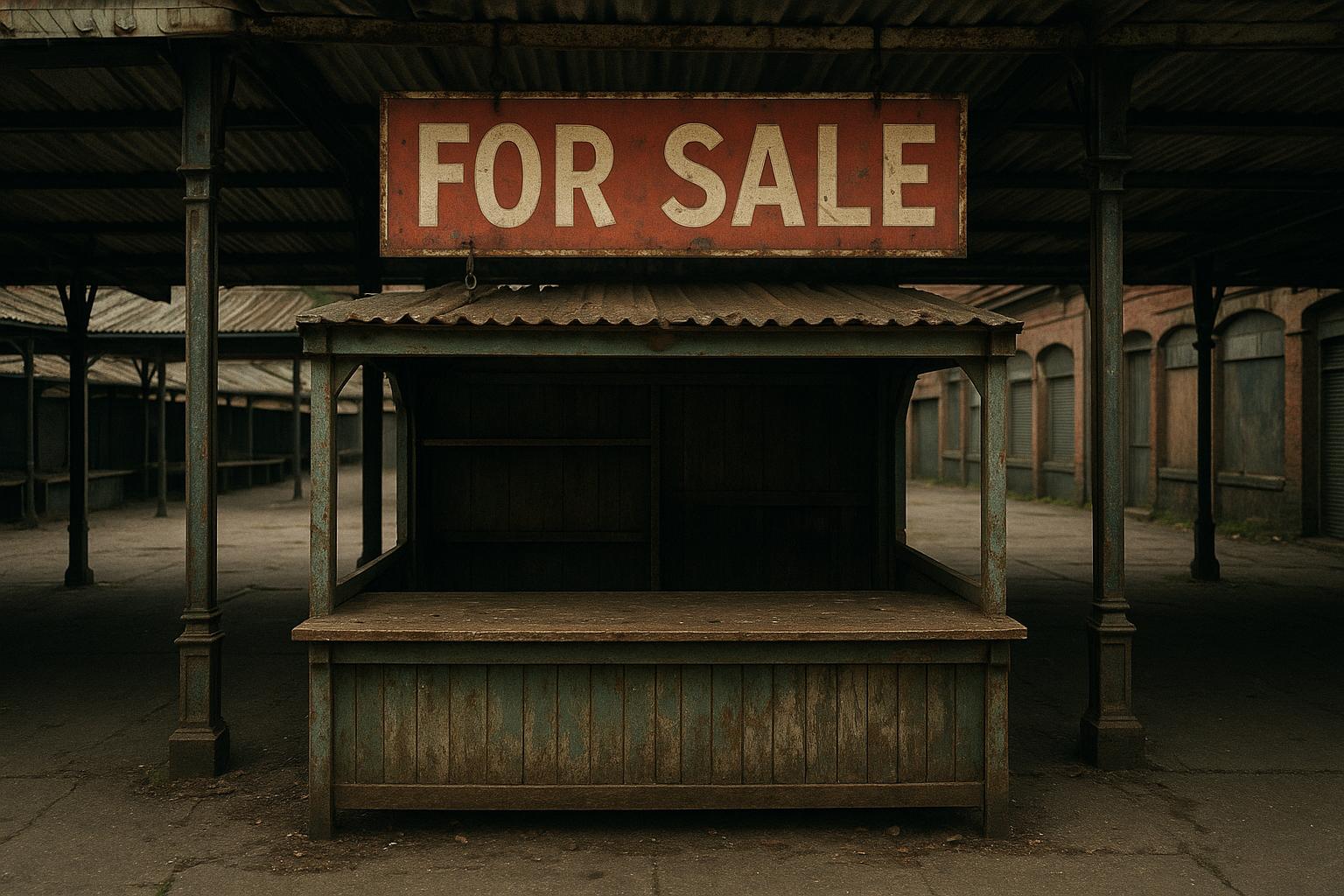Ridley Road Market in East London stands as a vibrant and culturally rich hub of community life, known for its intoxicating mix of fresh food stalls, affordable goods, and a palpable energy that distinguishes it from more commercialised London markets like Portobello and Camden. Established in the 1880s, this market is often hailed as the “heart and soul” of Dalston, embodying the gritty yet spirited essence of the East End’s multicultural heritage. Despite this, the market faces an uncertain future as traders grapple with rising operational costs, encroaching gentrification, and persistent social challenges.
Traders fear a looming hike in licence fees, which they believe could push many out of business, compounding the difficulties they have endured since the Covid-19 pandemic. Mohammed Shafique, a clothes seller, voiced frustration over what he described as the council’s “headaches” forcing traders to shoulder increased rents amidst a tough economic recovery. Similarly, shoe salesman Samba Tarawally shared how he lost his licence due to arrears, reflecting a broader trend of financial strain that threatens the livelihood of long-standing market participants.
Hackney Council has committed to safeguarding Ridley Road through substantial investment, including a £1 million refurbishment package introduced in 2023, aimed at protecting the market’s unique character and supporting its community role. Official figures indicate that footfall remains robust, with over 2.15 million visitors recorded in the year following the easing of lockdowns, suggesting the market’s enduring appeal. However, escalating management expenses have placed pressure on the council’s markets department, which has seen costs increase by £1 million over five years, half of which stem from staffing, alongside a 40% rise in waste collection costs—disproportionately affecting traders selling fresh produce.
Due to legal constraints, the council cannot subsidise market expenses through council tax revenue, making licence fee adjustments necessary to cover costs. After a pause in consultations sparked by trader objections, revised proposals have capped the waste collection fees, cutting around £500,000 from initial estimates. Yet this has done little to stem trader scepticism. Scott Lomax, a fruit and veg stallholder for over three decades, criticised the council’s projections and lamented the slow pace of promised improvements, such as a new hot food area designed to draw customers through the entirety of the market. Instead, traders report that the eastern end remains underutilised and has become a hotspot for drug use and antisocial behaviour, deterring family visitors and diminishing the market’s community atmosphere.
This social malaise has intensified traders’ anxieties. Abdul Alizade, a rug seller, described the area as a “ghost town” plagued by substance misuse and street drinkers, while Debbie Wilkins highlighted how these conditions alienate customers, exacerbating the already difficult trading environment. The shared resilience and camaraderie among Ridley Road’s vendors, many of whom have family ties extending back generations, underline how deeply embedded the market is within the local community. Yet their collective appeal for rent freezes or reductions underscores fears that unchecked financial and social pressures could ultimately erode this historic institution.
The council responded by reaffirming the importance of Ridley Road Market to Hackney's economy and community identity. A spokesperson explained that by law, market fees must cover operational costs, not be subsidised by council tax or generate profit. They emphasised a commitment to maintaining fair and competitive fees, noting that for most traders, proposed increases amount to modest daily sums, and revenues are reinvested to ensure markets remain safe, clean, and efficiently managed. Hackney Council has initiated consultation processes to balance market sustainability with trader welfare, acknowledging concerns raised and promising careful consideration before final decisions.
Market fee proposals currently suggest a 15–20% increase for fruit, vegetable, and street food vendors in the market’s central zone, alongside a more moderate 6.7% rise for non-food traders in peripheral zones. These adjustments aim to align with rising waste management and maintenance costs while benchmarking fees against comparable London markets, where Hackney’s charges are reportedly still competitive. Nonetheless, the tension between preserving Ridley Road’s traditional role and managing the financial realities of running a large urban market remains palpable.
In a broader context, Ridley Road’s struggle is emblematic of challenges facing historic markets across London. Gentrification and redevelopment threaten their cultural fabric, while economic pressures force councils to tighten budgets. Yet markets like Ridley Road continue to act as vital community hubs offering affordable goods, fostering social interaction, and preserving the multicultural legacy of their neighbourhoods. The coming months will likely determine if Ridley Road can weather these pressures and emerge resilient or if the combined weight of rising costs, social issues, and shifting urban priorities will lead to irreversible change.
📌 Reference Map:
- Paragraph 1 – [1], [3], [5], [7], [4]
- Paragraph 2 – [1], [4]
- Paragraph 3 – [1], [6]
- Paragraph 4 – [1], [2], [6]
- Paragraph 5 – [1]
- Paragraph 6 – [1], [6]
- Paragraph 7 – [2], [6]
- Paragraph 8 – [1], [4], [5]
Source: Noah Wire Services
